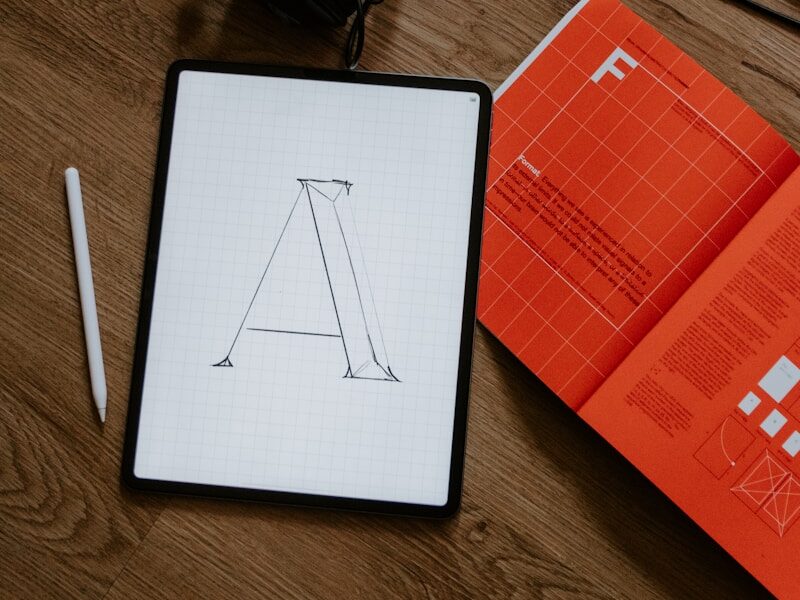
Why Branding Starts Before the First Web Page is Built
Your Brand is More Than a Logo
When you think of branding and website design, you might picture a shiny logo or catchy tagline, right? While those are important, they’re just the tip of the iceberg. Your brand is the entire personality of your business—it’s how people feel when they think about you. Before you even touch website design, you need to know what that personality looks like. Ask yourself: Who are we? What do we stand for? This foundation guides every design decision, from your color scheme to the tone of your content.
Define Your Brand’s Voice and Values Early
Think of your brand as a person. Is it professional and formal? Or is it fun, quirky, and approachable? This “voice” will shape everything, including how your website speaks to visitors. When your brand’s voice is defined early, it’s much easier to create a website that feels cohesive and authentic. Plus, having clear values gives your business a story people want to connect with. And let’s be honest—who doesn’t love a good story?
Consistency is the Secret Sauce
Imagine you’re at a café and order your favorite drink. One day, it’s rich and flavorful. The next, it’s watery and bland. Frustrating, right? That’s what happens when your branding isn’t consistent. Before you start building your site, ensure you’ve nailed down your fonts, colors, and overall style. These elements create trust and recognition, helping your audience remember you.
A Roadmap for Website Design Success
Think of branding as the GPS for your website design. Without it, you might end up somewhere you don’t want to be. Before you open that website builder or hire a designer, take the time to map out your branding. A clear vision saves time, money, and countless headaches later on.
How Branding and Website Design Work Together
Branding and website design are a team effort—they work hand in hand. When your brand is clearly defined upfront, designing a website becomes a creative expression rather than a guessing game. It’s not just about looking good; it’s about creating an online experience that matches who you are and what you offer.
Start Strong with Your Branding
Starting your branding journey before jumping into website design isn’t just a smart move—it’s a game-changer. It’s like setting the stage for a performance where your audience can’t look away. So, grab a notebook, jot down your brand’s personality, and get ready to build a website that truly represents you.
Do you want to explore how branding shapes your website design? Let’s talk!
Incorporating Branding into CTAs and Landing Pages
Make Your CTAs Speak Your Brand’s Language
Think about this: when your call-to-action (CTA) says, “Click Here,” is it really capturing who you are as a brand? A CTA is like a handshake—it’s often the first interaction your audience has with your business. To make it memorable, weave your branding into it. If your brand is fun and quirky, go for something like “Let’s Dive In!” If you’re professional, maybe “Get Started Today” is more your style. Matching your brand’s tone in your CTAs creates a seamless experience that feels uniquely you.
Use Your Colors and Fonts Wisely
Your landing page is prime real estate for showcasing your branding. It’s not just about throwing your logo in the corner—it’s about consistency. Use your brand colors and fonts throughout your page to create a unified look. For example, if your brand is calm and sophisticated, muted tones and elegant typography can reinforce that. On the flip side, bold colors and playful fonts might work for a more energetic brand. When visitors see these elements repeated across your site, it builds trust and makes your business more recognizable.
Check out my favorite tool for creating color palettes.
Tell a Story with Your Landing Page
Your landing page isn’t just about getting visitors to click a button; it’s about telling a story that reflects your brand. Use images, headlines, and copy that highlight what makes your business special. Let’s say you’re a small bakery with a warm, community-focused vibe. Your landing page could feature photos of smiling customers, a heartfelt tagline like “Baking Joy Since 2010,” and CTAs that say, “Taste the Love.” This approach turns your landing page into an experience, not just a sales pitch.
Keep the Experience Consistent
Ever clicked a CTA that promised one thing, only to land on a page that felt completely different? Frustrating, right? That’s why consistency between your CTAs and landing pages is crucial. If your CTA says, “Transform Your Space,” your landing page better deliver that transformative feel. Consistency reassures visitors that they’re in the right place, making them more likely to stick around—and convert.
The Psychology of Branding in CTAs
Branding and website design isn’t just about looking good; it’s about making people feel something. When your CTAs and landing pages reflect your brand’s values, you’re tapping into your audience’s emotions. For example, if your brand is eco-friendly, a CTA like “Join the Green Revolution” speaks directly to your audience’s passions. This emotional connection turns casual visitors into loyal customers.
Leverage Social Proof to Enhance Your Brand
Landing pages are the perfect place to show off what makes your brand trustworthy. Incorporate testimonials, reviews, or trust badges that align with your branding. For instance, a friendly, community-focused brand might include quotes from happy customers, while a luxury brand could feature logos of high-profile clients. These elements reinforce your branding and make your CTAs even more compelling.
Test, Tweak, and Optimize
Great branding doesn’t happen by accident, and neither does a high-performing landing page. Once you’ve incorporated your branding into your CTAs and landing pages, test different versions to see what resonates most with your audience. Maybe a playful CTA works better than a formal one, or a certain color combo boosts clicks. The more you refine, the stronger your branding becomes.
Make Branding Your Secret Weapon
Incorporating branding into your CTAs and landing pages isn’t just a design choice; it’s a strategy. It helps your business stand out, builds trust, and connects with your audience on a deeper level. By aligning your branding and website design, you’re setting the stage for a seamless, memorable user experience.
Now, go ahead—take a fresh look at your landing pages and CTAs. How can you make them more “you”?
Branding Through Website Design
Your website is more than just a digital space; it’s your brand’s online handshake. Every color, font, and image speaks volumes about who you are and what your business stands for. With the right approach, branding and website design can work together to tell your story, connect with your audience, and make a lasting impression. Let’s dive into how you can make that happen.
First Impressions Matter: Set the Tone with Design
Your homepage is like the front door to your brand. The moment someone lands on your site, they’re forming opinions. Are you professional, quirky, modern, or traditional? These impressions are often shaped by your color palette, typography, and layout. For example, if you’re a bold and energetic brand, vibrant colors and dynamic design elements can communicate that instantly. On the other hand, a minimalist layout with calming tones might be perfect for a wellness brand. You have about 50 milliseconds to wow your visitors—make them count!
Consistency Is Key: Stick to Your Brand Identity
A consistent design across your website reinforces your brand identity. Imagine visiting a site with a sleek homepage but inconsistent fonts or clashing colors on other pages. It’s jarring and can make visitors lose trust. Keep your logo, fonts, and colors the same across every page. This uniformity isn’t just visually pleasing—it strengthens your brand recognition. When people see your signature style, they’ll immediately know it’s you.
Responsive Design: Branding Across Devices
Your branding and website design doesn’t stop at desktop screens. A website that looks great on a computer but fails on a phone can hurt your image. Responsive design ensures your branding shines across all devices. It’s not just good for user experience; it shows you care about the details, which builds trust.
DIY vs. Professional Branding and Website Design
Branding and website design are two pillars of your business’s identity. Whether you’re a start-up or scaling, you’ve probably faced the classic dilemma: Should you roll up your sleeves and DIY, or hire a pro? Both approaches have their merits, but they can lead to wildly different outcomes. Let’s explore the ups and downs of each option to help you decide what’s best for your brand.
The Allure of DIY: Budget-Friendly but Time-Consuming
DIY branding and website design can feel like a tempting choice, especially when budgets are tight. Platforms like Canva and Wix make it easy to create something decent without a design degree. But here’s the catch: while these tools are great for basics, they can quickly feel limiting as your business grows.
Think about it—will that logo you whipped up in an hour still represent your brand five years from now? And what about the hours spent troubleshooting layout issues? DIY saves money upfront but often costs you time, energy, and sometimes your sanity.
The Power of Professional Branding: Expertise Meets Customization
When you hire a professional for your branding and website design, you’re not just paying for their skills—you’re investing in experience and strategy. A pro will dig deep into your business’s goals, target audience, and personality to craft something truly unique.
Imagine having a website that doesn’t just look good but also converts visitors into customers. Professionals know the little tricks, like the psychology of colors, typography, and layouts, that can elevate your online presence. Plus, they’ll create a cohesive brand identity that feels polished and consistent across all your platforms.
Why DIYers Often Hit a Wall
Let’s be honest—there’s only so much you can achieve with DIY tools. Maybe you’ve noticed your website loads slowly, doesn’t adapt well to mobile screens, or looks eerily similar to others in your industry. That’s because DIY platforms have limitations that aren’t easy to overcome without a developer’s touch.
You also risk falling into the trap of inconsistency. Your DIY logo might look great on your website but fall flat on business cards or social media. Consistency is key in branding and website design, and it’s an area where DIY efforts often fall short.
If you’ve hit a wall and need a hand, don’t hesitate to reach out

